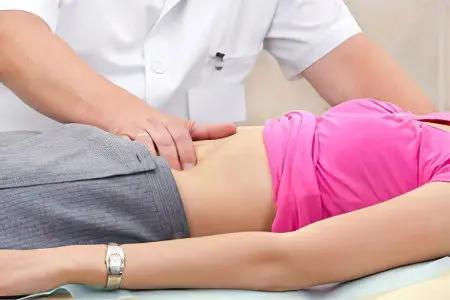Contents

The main difference between catarrhal gastroduodenitis and other forms of this pathology is its acute course, caused by a single action of chemical, toxic, temperature, bacterial or viral factors. This disease always begins suddenly and has a vivid clinical picture.
In some medical sources, it is customary to differentiate catarrhal gastritis and catarrhal duodenitis, although these diseases rarely occur in isolation. In the vast majority of cases, the inflammatory process extends to the stomach and duodenum.
Every second person at least once in his life has experienced what constitutes catarrhal, or alimentary, gastroduodenitis. This inflammatory lesion of the mucous membrane of the stomach and upper intestine occurs suddenly and is severe. Catarrhal gastroduodenitis, despite the superficial tissue damage, is dangerous for its complications. The disease often ends with the appearance of ulcers and erosions, the opening of gastric bleeding.
Reasons for the development of catarrhal gastroduodenitis

The most common cause of catarrhal gastroduodenitis is nutritional errors. These include overeating, the inclusion of indigestible foods in the menu, the use of excessively hot or too cold food, extractive dishes.
Other causes of catarrhal gastroduodenitis:
Infection with infectious agents (E. coli, clostridia, streptococci, staphylococci, Helicobacter pylori bacterium) and the toxins they secrete;
Alcohol abuse;
The consequence of taking NSAIDs, antibacterial drugs, steroids, narcotic analgesics;
Radiation;
Complications of food allergies;
Pylorospasm with reflux of bile;
Injuries of the gastric mucosa;
The release of hydrochloric acid as a result of stress;
The desire to reduce weight with the help of radical diets;
Hereditary predisposition to diseases of the gastrointestinal tract.
Symptoms of catarrhal gastroduodenitis

The clinical picture of the disease depends on the cause of catarrhal gastroduodenitis. Usually, the first signs of inflammation appear 10-12 hours after exposure to lesion factors. Perhaps the rapid development of the disease in 1-2 hours.
Symptoms of catarrhal gastroduodenitis caused by dietary errors:
Malaise, weakness;
Feeling of heaviness and fullness in the stomach, pain in the epigastric region;
Hypersalivation, although it is possible, on the contrary, dry mouth;
Sour or bitter taste in the mouth;
Nausea;
Decreased appetite, refusal to eat;
Dizziness;
Vomiting of recently eaten food, mucus and bile in the vomit;
Paleness of the skin, trembling of the arms and legs, tachycardia, hypotension against the background of an attack of vomiting;
Diarrhea;
White or dirty yellow coating on the tongue;
Bad breath.
At the beginning of the disease, there is a sharp increase in the acidity of gastric juice, and then a fall against the background of inhibition of the activity of the glands inside the stomach.
Manifestations of the disease caused by food poisoning:
Exhausting vomiting;
Diarrhea;
Increase in body temperature;
Spasms of the calf muscles against the background of electrolyte imbalance due to profuse vomiting.
The remaining manifestations of this form of catarrhal gastroduodenitis are similar to the clinical picture described above.
Diagnostics

When diagnosing this form of the disease, the gastroenterologist takes into account the peculiarities of the patient’s diet, the fact of taking medications, a history of allergies and characteristic clinical symptoms.
Assigned instrumental and laboratory tests:
General blood analysis;
Blood chemistry;
Bacteriological examination of vomit;
Analysis of feces for occult blood;
Examination of gastric juice;
EGDS (esophagogastroduodenoscopy) is the most informative endoscopic examination that allows you to see hyperemia and edema of the mucous membrane, vulnerability and bleeding of the inner lining of the stomach;
Endoscopic tissue biopsy;
Multislice computed tomography;
X-ray of the stomach with double contrast – reveals the characteristic signs of gastroduodenitis;
Electrogastrography – helps to detect violations of the peristalsis of the stomach and intestines;
Intragastric pH-metry – used to determine the acidity of gastric juice.
During a CT scan, the doctor can see signs of catarrhal gastroduodenitis, such as swelling of the mucous membrane, erosion, thickening of the folds of the stomach.
Treatment of catarrhal gastroduodenitis

Therapy of an acute form of catarrhal gastroduodenitis is often carried out in a hospital, in the gastroenterological department. A prerequisite for effective treatment is a diet that involves fasting during the first day of the disease, and then eating mashed, steamed food. Following the diet should last at least 7-10 days. The treatment regimen is determined by the doctor after establishing the cause of the development of gastroduodenitis.
Drug groups of drugs used:
Antibiotics (if a bacterial infection factor is detected);
proton pump inhibitors;
Gastroprotectors;
H2-histamine receptor blockers;
antiviral drugs;
Analgesics;
Antispasmodics;
Prokinetics.
To restore electrolyte balance and prevent dehydration, an infusion of saline is prescribed.
Prognosis and prevention

With timely access to qualified advice, diagnosis and treatment, the prognosis of the disease is favorable, the patient can fully recover. If you do not pay due attention to therapy, it is possible to develop erosive, and then – phlegmonous gastroduodenitis.
In order not to provoke the occurrence of the disease and its complications, you need to adhere to the principles of a healthy diet, treat gastrointestinal diseases in a timely manner. Avoiding overeating, smoking and alcohol abuse will reduce the risk of this form of gastroduodenitis. When treating with medications that have side effects that are dangerous for the stomach and intestines, you should follow the doctor’s recommendations. There is a secondary prevention – this is a timely started therapy for catarrhal gastritis in order to avoid its transition to more severe forms and possible gastric perforation.









